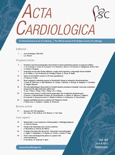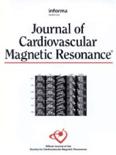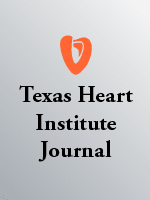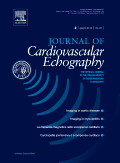
INTERNATIONAL JOURNAL OF CARDIOVASCULAR IMAGING
Scope & Guideline
Empowering Healthcare Through Cutting-Edge Imaging
Introduction
Aims and Scopes
- Multimodal Imaging Techniques:
The journal emphasizes the integration of various imaging modalities such as echocardiography, cardiac magnetic resonance (CMR), computed tomography (CT), and nuclear imaging. It explores the synergistic use of these techniques to improve diagnostic capabilities and treatment planning. - Artificial Intelligence in Imaging:
There is a strong focus on the application of artificial intelligence and machine learning in cardiovascular imaging. This includes automated image analysis, predictive modeling, and enhancing diagnostic accuracy through advanced algorithms. - Cardiac Function Assessment:
A consistent theme is the evaluation of cardiac function through various imaging techniques, including strain imaging, volumetric assessments, and flow dynamics. This includes studies on left and right ventricular function, myocardial strain, and diastolic function. - Cardiovascular Disease Mechanisms:
The journal publishes research that elucidates the underlying mechanisms of cardiovascular diseases through imaging. This includes studies on plaque characterization, myocardial ischemia, and heart failure diagnostics. - Clinical Outcomes and Prognostication:
The journal aims to correlate imaging findings with clinical outcomes, providing insights into risk stratification and prognostic indicators in cardiovascular disease management.
Trending and Emerging
- Advanced Imaging Technologies:
Emerging trends include the use of advanced imaging technologies such as 3D echocardiography, photon-counting CT, and hybrid imaging techniques that combine multiple modalities for enhanced diagnostic accuracy. - Radiomics and Imaging Biomarkers:
The incorporation of radiomics and imaging biomarkers is a growing theme, focusing on extracting quantitative data from imaging studies to predict patient outcomes and tailor treatments. - Focus on Heart Failure and Myocardial Function:
There is an increasing emphasis on the assessment of myocardial function and heart failure through novel imaging techniques, including strain imaging and pressure-volume analysis. - Telemedicine and Remote Imaging:
The COVID-19 pandemic has accelerated research into telemedicine and remote imaging applications, reflecting a significant shift towards remote patient monitoring and virtual consultations. - Integration of Genomics and Imaging:
An emerging area of interest is the integration of genomic data with imaging findings to better understand cardiovascular diseases and personalize treatment approaches.
Declining or Waning
- Traditional Imaging Techniques:
There is a noticeable waning interest in older imaging modalities such as standard fluoroscopy and non-enhanced echocardiography, as newer technologies like 3D echocardiography and advanced CT techniques gain prominence. - Basic Correlation Studies:
Research focusing solely on basic correlations between imaging parameters and clinical outcomes, without the integration of advanced analysis techniques or machine learning, appears to be declining. - Invasive Imaging Techniques:
With the rise of non-invasive imaging methods, there is less emphasis on invasive imaging techniques such as cardiac catheterization and traditional angiography, particularly in studies designed to assess coronary artery disease. - Single Modality Studies:
There is a shift away from studies that only utilize a single imaging modality. The trend is towards multimodal approaches that combine different imaging techniques to provide a more comprehensive assessment.
Similar Journals

ACTA CARDIOLOGICA
Illuminating the path to better cardiovascular care.ACTA CARDIOLOGICA is a distinguished journal published by TAYLOR & FRANCIS LTD, focusing on the dynamic fields of Cardiology and Cardiovascular Medicine. Established in 1946, the journal has maintained a significant presence in the academic community, providing a platform for cutting-edge research and clinical studies that aim to address challenges in cardiovascular health. With its Q3 rating in both Cardiology and General Medicine categories, it showcases a robust compilation of articles that reflect the evolving landscape of cardiac care. Although ACTA CARDIOLOGICA is not an Open Access journal, it continues to serve a vital role for researchers, professionals, and students dedicated to advancing knowledge in cardiovascular health. This journal, with an ISSN of 0001-5385 and E-ISSN of 1784-973X, is a critical resource for those looking to stay updated on the latest developments and practices in the specialization, contributing significantly to the field until 2024 and beyond.

JOURNAL OF CARDIOVASCULAR MAGNETIC RESONANCE
Shaping the landscape of cardiology with impactful magnetic resonance research.JOURNAL OF CARDIOVASCULAR MAGNETIC RESONANCE (ISSN: 1097-6647, E-ISSN: 1532-429X) is a premier open access journal published by Elsevier Science Inc in the United Kingdom, dedicated to advancing the field of cardiovascular imaging through magnetic resonance technology. Since its inception in 1999, the journal has established a robust reputation, evidenced by its ranking in the Q1 category across various fields including Cardiology and Cardiovascular Medicine, Family Practice, and Radiology, Nuclear Medicine and Imaging, as reported in its 2023 assessments. With a strong emphasis on high-quality research and innovations, this journal serves as a vital resource for researchers, clinicians, and students alike, providing vital insights that influence clinical practice and enhance patient care. Its rigorous peer-review process ensures that all contributing authors publish influential studies that are widely disseminated within the academic community. Researchers can access the journal freely since it has been an open access platform since 2008, promoting a wider reach and engagement within the cardiovascular imaging arena.

TEXAS HEART INSTITUTE JOURNAL
Driving Progress in Cardiovascular Medicine Since 1982.TEXAS HEART INSTITUTE JOURNAL, published by the renowned Texas Heart Institute, stands as a pivotal resource in the field of cardiology and cardiovascular medicine. With a history spanning over four decades since its establishment in 1982, this journal addresses a wide range of topics within its scope, including clinical studies, innovative treatments, and groundbreaking research in heart health. Despite its Q3 ranking in both Cardiology and Cardiovascular Medicine, the journal is committed to fostering advancement in medical knowledge and practice, providing an essential platform for healthcare professionals and researchers alike. While currently lacking open access, the journal is recognized for its contributions to the field, aiming to illuminate critical healthcare discussions and promote the exchange of ideas. For those interested in staying at the forefront of cardiovascular research, TEXAS HEART INSTITUTE JOURNAL offers invaluable insights and the latest developments shaping the future of heart care.

Journal of Cardiovascular Echography
Unveiling breakthroughs in cardiovascular echography.Journal of Cardiovascular Echography, published by WOLTERS KLUWER MEDKNOW PUBLICATIONS, serves as a premier platform for global researchers, medical professionals, and students dedicated to the ever-evolving fields of cardiology and cardiovascular imaging. With the ISSN 2211-4122 and E-ISSN 2347-193X, this journal provides access to cutting-edge research from 2011 to 2024, offering insights into the latest advancements in echocardiographic techniques and their clinical applications. Despite its current classification in the Q3 quartile within both Cardiology and Cardiovascular Medicine as well as Radiology, Nuclear Medicine, and Imaging, it continues to make meaningful contributions to the academic community, ranking 234th in the Scopus category for Radiology and 278th in Cardiology. The Journal of Cardiovascular Echography is committed to furthering knowledge and fostering collaboration among researchers by sharing critical developments in the field, making it an essential resource for anyone looking to stay abreast of transformational changes in cardiovascular diagnostics.

JACC-Cardiovascular Imaging
Exploring the Depths of Cardiovascular DiagnosticsJACC-Cardiovascular Imaging, published by Elsevier Science Inc, is a premier journal that focuses on the rapidly evolving field of cardiovascular imaging, providing a vital platform for the dissemination of high-quality research and clinical studies. With an impressive impact factor and ranking within the top tier of cardiology and radiology specialties, the journal is recognized for its commitment to advancing knowledge in diagnostic imaging techniques, including echocardiography, MRI, and CT in cardiovascular contexts. Since its inception in 2008 and converging through 2024, JACC-Cardiovascular Imaging has maintained a distinguished position, currently ranking Q1 both in Cardiology and Cardiovascular Medicine as well as in Radiology, Nuclear Medicine and Imaging. This ensures its relevance and influence, as evidenced by its Scopus rankings—ranked #2 in Radiology and #8 in Cardiology, placing it in the top echelons of scholarly output. Although it does not offer open access, the journal's content is crucial for researchers, clinicians, and students who seek to remain at the forefront of cardiovascular imaging advancements.

CURRENT OPINION IN CARDIOLOGY
Navigating the latest trends in cardiovascular medicine.CURRENT OPINION IN CARDIOLOGY, published by LIPPINCOTT WILLIAMS & WILKINS, is an esteemed journal in the field of cardiology that has been serving the academic community since 1988. With a robust focus on the latest developments and emerging trends in cardiovascular medicine, this journal aims to bridge the gap between clinical practice and research, offering critical insights and expert commentary. The journal is recognized in the medical community, achieving a 2023 Scopus rank of #148 out of 387 in its category, placing it in the 61st percentile. Although it operates under a subscription-based model, CURRENT OPINION IN CARDIOLOGY remains an essential resource for researchers, practitioners, and students seeking cutting-edge knowledge and advancements in cardiology. As a Q2 journal in the field, it continues to foster dialogue and provide a platform for disseminating impactful cardiovascular research, ultimately contributing to improved patient outcomes and informed clinical decisions.

Frontiers in Cardiovascular Medicine
Empowering Researchers to Transform Cardiovascular Care.Frontiers in Cardiovascular Medicine is a leading open-access journal published by FRONTIERS MEDIA SA, dedicated to advancing research in the field of cardiology and cardiovascular medicine. Since its inception in 2014, the journal has become a vital platform for the dissemination of high-quality research, boasting a commendable Q2 rank in the 2023 category for Cardiology and Cardiovascular Medicine. With a focus on promoting innovative studies and clinical insights, Frontiers in Cardiovascular Medicine facilitates open access to its content, allowing researchers, healthcare professionals, and students from around the globe to engage with the latest findings which are critical for the advancement of cardiovascular health. The journal's significant presence in the academic landscape, as indicated by its Scopus ranking (161/387 and 58th percentile), underscores its importance as a research outlet in this essential field. Located in Lausanne, Switzerland, the journal continues to support the global cardiovascular community by encouraging collaboration and knowledge sharing to address the challenges faced in cardiovascular medicine today.

Imaging
Illuminating Innovations in Imaging TechniquesImaging, published by AKADEMIAI KIADO ZRT, is an esteemed open-access journal dedicated to the field of medical imaging, established in 2020. With an E-ISSN of 2732-0960 and based in Budapest, Hungary, this journal provides a vital platform for the dissemination of cutting-edge research and advancements in imaging techniques, especially in the realms of radiology, nuclear medicine, and ultrasound technology. While currently positioned in the Q4 category across multiple medical specialties, the journal continues to strive for improvements in visibility and impact, contributing to the evolving discourse in medical imaging. The journal aims to facilitate an inclusive and collaborative environment for researchers, professionals, and students, inviting them to share their findings and insights to enhance the field's development. With open-access availability since its inception, Imaging ensures free and easy access to its content, fostering a greater understanding and appreciation of innovative imaging practices worldwide.

ANNALS OF NUCLEAR MEDICINE
Connecting Researchers to the Future of Nuclear DiagnosticsANNALS OF NUCLEAR MEDICINE is a prominent academic journal dedicated to the field of nuclear medicine, published by Springer. With a rich publication history dating back to 1987 and continuing through 2024, this journal serves as a vital resource for researchers and practitioners interested in the latest developments in nuclear imaging, radiopharmaceuticals, and therapeutic applications. Ranked in the second quartile (Q2) for both Medicine (miscellaneous) and Radiology, Nuclear Medicine, and Imaging categories in 2023, it maintains a strong position in the academic community, with an impressive Scopus rank of #104 out of 333 in its field, placing it in the 68th percentile. The journal is not open access but offers a range of access options through institutional or individual subscriptions, ensuring that critical research findings reach a wide audience. By fostering high-quality, peer-reviewed articles, ANNALS OF NUCLEAR MEDICINE plays a crucial role in advancing the understanding and practical application of nuclear medicine techniques, making it an essential journal for professionals and students aiming to stay at the forefront of this evolving discipline.

Revista de la Federacion Argentina de Cardiologia
Innovating cardiology through research and dialogue.Revista de la Federacion Argentina de Cardiologia is a vital publication in the field of Cardiology and Cardiovascular Medicine, providing a platform for researchers and healthcare professionals to share significant findings and innovative concepts since its inception in 2012. Published by the Federacion Argentina Cardiology, this journal specifically addresses contemporary issues and advancements within cardiology, contributing to the scholarly dialogue essential for improving cardiovascular health. Despite being categorized in the Q4 quartile for 2023 and presently ranking #358 out of 387 in its field, the journal remains committed to fostering academic inquiry and disseminating valuable research for both local and global audiences. Although it is not an open-access journal, it strives to balance accessibility with rigorous academic standards, ensuring quality contributions that are critical for practitioners and students alike. The journal’s ongoing evaluation and adaptation in the ever-evolving landscape of cardiology underscore its importance in advancing cardiovascular science and practice.